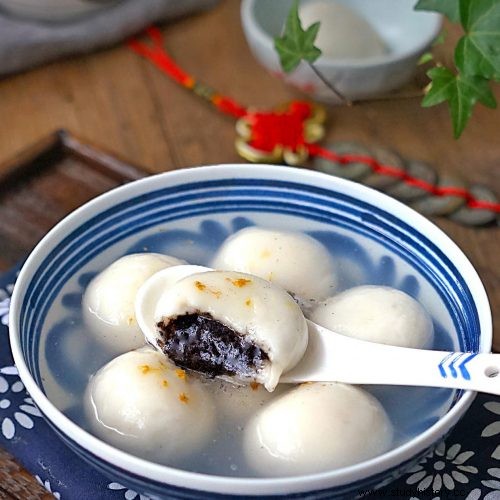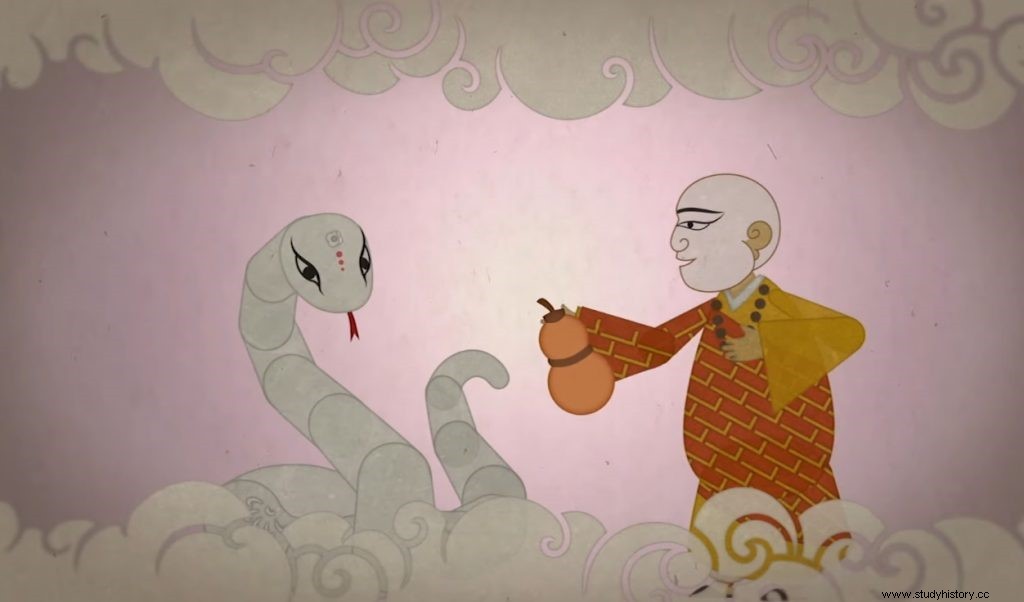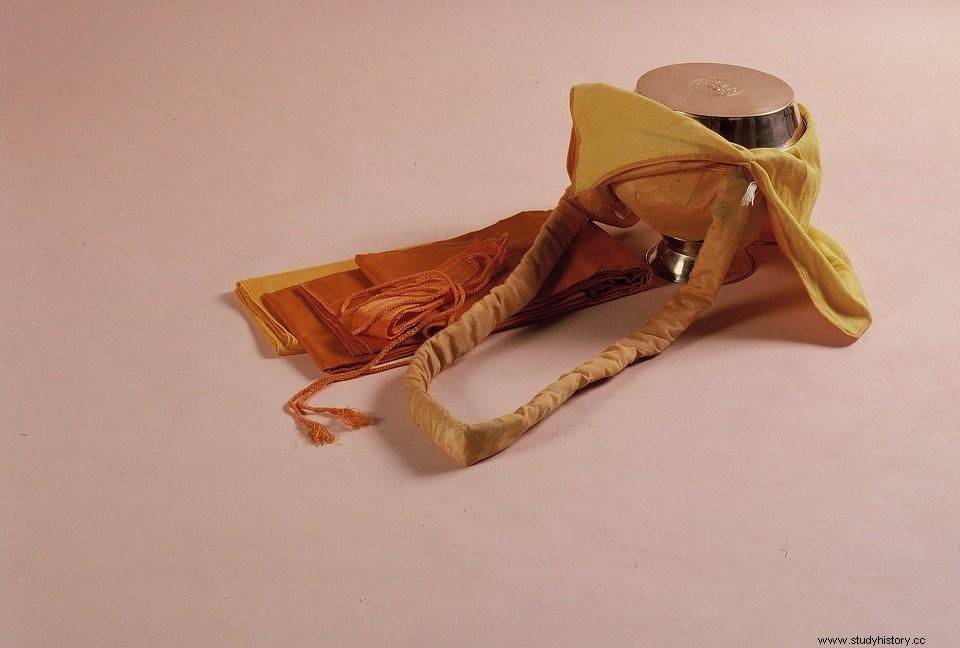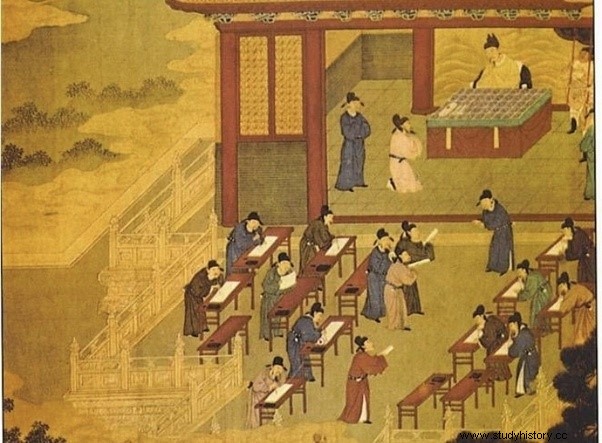When we look up the definition of myth, we get some such results. Myth is a traditional story that involves supernatural beings or events that happened in the beginning of humanity. Although there are also some who say that it is a false belief that belongs to people. Whatever it is, myths and mythological stories have always been of interest to us. It shows the lifestyle of ancient people and the way they perceive an event or story. So how about learning about a not-so-familiar myth now? Let's dive into a mysterious mythical tale, known as "The Legend of the White Snake".
An insight into the legend of the white snake
There are many well-known myths around the world that are still talked about. Take, for example, the Norse mythology of Thor's fairy tales or El Dorado, a Colombian legend. Many are aware of these myths and legends. But it is a lesser known myth or perhaps even a legend. The legend of the white snake from an ancient Chinese folk tale. The story is basically about an immortal snake who falls in love with a human. The legend of the white snake is also known as Madame White Snake.
The symbolic meaning of snake
Snakes are one of the oldest myths that have crossed the world's borders and become universal. Snakes have represented both good and evil. About a few cultures, they were represented as a symbol of fertility. While in others, they are shown as an umbilical cord that unites humanity with Mother Earth.

Snakes, in some cultures, are considered immortal as they appear to be reincarnated each time they shed their skin. While in other bites snakes in their own tail and make a circle. As they roll up, they form a spiral shape. This makes immorality associated with snakes.
In some cases, it can also mean death, destruction, evil or a boneless poison that slips on the road. In Christian culture, it is believed to be the form taken by Satan. He disguised himself as a serpent and urged Eve to break God's command and thus begin the fall.
About the legend of the white snake

The folktale goes back to the Tang dynasty. They ruled from 618-907. However, the script for this story was written only in the Qing Dynasty. Under his rule as emperor, Qianlong sat down and revised the script. It became sensational all over China after that. The Legend of the White Snake is so important in Chinese literature. The reason is that it is one of the four classic folk tales. The other folk tales are Butterfly Lover, Lady Meng Jiang and The Cowherd &Weaver Girl.
Lays out the legend of the white snake
Like all other myths and legends out there, this one also has many versions. Let's go into one of these versions.
Into the Beginning
To start with the regular version, the white snake was in a lake. It practiced Taoist magical art for a long time. It happened then to eat a pill and gain magical powers.
The pill was actually consumed by Xu Xian, a mortal, who assumed it was tangyuan. He received the pill from Lu Dongbin, one of the eight immortals who disguised themselves as a tangyuan supplier. The pill was actually an immortality pill. Three days after having it, Xu Xian did not feel hungry. He suspected it was the tangyuan, and approached the salesman, Lu Dongbin, in disguise. Xu Xian asks Lu Dongbin about this, who laughs and turns him upside down. Xu Xian throws the pill into the sea. What white snake eats. The white snake felt guilty and attached to Xu Xian.

The first meeting with the couple
After 18 years, the snakes change into human forms and meet Xu Xian during the Qingming festival. They meet him at the broken bridge in Hangzhou, where he offers the umbrella to the ladies. They accepted it as it was raining then. With her magical powers, Su Zhen sets up many situations to face Xian. Eventually, Su Zhen and Xu Xian fall in love and get married.

After marriage
When the couple got married, they went to Zhenjiang and opened a medicine shop. Bai Su Zhen helps her husband, Xu Xian, set up shop and write prescriptions for patients. Word spread quickly about how effective the medicine from their store was, and they became known to the city.
One day a Buddhist monk known as Fa Hai visited the store and warned Xu Xian that his wife was a white snake. Before leaving, he gives Xu Xian real tartar and asks him to give it to Bai Su Zhen at the Duan Wu Festival. The wine is known to weaken the powers of supernatural beings. Initially, Xu Xian did not intend to test his wife, but he eventually did. Unbeknownst to him, his wife was pregnant with their baby, which affected her magical powers. In an attempt to please her husband, she drinks, but immediately gets the consequences.
Xu Xian is near death
She claimed she was unwell, and went to their bedroom where she changed to her true form, the white snake. On the other hand, Xu Xian was worried about her well-being and went to check on her. To his shock, however, he sees a white snake and loses his life. She tried to use her magical powers to save him in vain. To revive her husband, Su Zhen travels to Mount Kun Lun and is accompanied by Xian Qing. At Mount Kun Lun, there is a magical herb that can bring people back to life. But it is known to have been guarded by a monk. Although she had problems, she got the herb. When she came home to Xu Xian with the herb, she brought him back to life. Despite knowing his wife's true form, he accepted and loved her.

Trouble after trouble
Fa Hai's first attempt to separate the couple failed. Still, he was not willing to give up. In his second attempt, he sent an invitation to Xu Xian for the opening of Jinshan Temple. But neither Xu Xian nor Bai Su Zhen was aware of the sender. Ignoring Su Zhen's warnings, he went to the ceremony as the devout Buddhist he was.
When he got there, he found the monk and realized that it was the monk who sent him the invitation. He suggested Xu Xian become a monk and forget about his wife, but Xu Xian refused. To stop him from going, the monk told him to stay in the temple and purify his soul while he was with a demon. Meanwhile, Bai Su Zhen was at home worried that she would not be able to tell her husband about the pregnancy. In addition, there were no signs that he was coming home. A worried Bai Su Zhen left home to look for her husband.

Bai Su Zhen's Confrontation
Bai Su Zhen eventually went to the temple and confronted the monk who threw his prayer mat at her. The mat blew up in fire and smoke. Bai Su Zhen is weakened after the pregnancy and is desperately trying to save her husband with her powers. She gathered an army of shrimp soldiers and crab generals and waved to put out the flames. These waters ended up being a flood and killed many innocent lives. This caused her strength to withdraw as she was no longer in God's favor. By using this opportunity, the monk tries to catch her in his magical alms bowl. However, she was saved by a mysterious force that came from her stomach. Later, the couple returned home safely.
Last attempt at Fa Hai
Shortly after the incident, Bai Su Zhen gave birth to a son, Xu Shi Lin. Despite this eventful moment, Xu Xian feared that Bai Su Zhen's unintentional accident could harm him and his family. Sometime later, the mad monk, Fa Hai, visited their home and gave alms to Xu Xian. He assured Xu Xian that the alms bowl would bring happiness to his son. Xu Xian was quite skeptical of the monk. Still, he accepted the gift.
As soon as he got home, the bowl flew and caught Bai Su Zhen inside. After receiving the ball, Fa Hai buries it in Lei Feng Pagoda. Near the place where she was buried there was an iron tree. When Xu Xian asked him to release his wife, he replied "She will be free when the iron tree blooms". Xu Xian felt guilty for his actions and the consequences of his wife, and went to a monastery. He left Shi Lin under the care of Xiao Qing.

Saved Bai Su Zhen

Unfortunately, the couple was unaware that their son is the reincarnation of Wen Qu Xing. He is the god of wisdom and the mysterious power that saved Bai Su Zhen in the temple. While growing up, his aunt shared the story of his parents with him. As time went on, he became wiser, and as a 19-year-old he took the nationwide imperial exam. He ended up getting the highest score in any empire and received a prize from the emperor himself. The prize was an ornate hat decorated with jeweled flowers.
Despite his achievement, his parents' fate weighed on him. Convincing his father of exile, he went to Lei Feng Pagoda to show respect for his mother. Shi Lin placed his ornate hat, the Imperial Prize, on the iron tree as a sacrifice. The ground opened abruptly and Bai Su Zhen went out. When her sins were liberated by a god and a flower on the tree, Shi Lin reunited her family. Both divine and mortal.
Other versions of the legend of the white snake
Although all versions of this legend have the same premise, there are some variants of it. The first is that the monk, Fa Hai, was actually a turtle in the lake where Bai Su Zhen was a snake. Jealous that he failed to have the pill, he tries to ruin the couple's marriage.
In some other versions, the green snake, Xiao Qing, appears as one of the sisters of Bai Su Zhen. It is believed that she was jealous of Su Zhen's beauty, powers and everything else. This led her to betray Su Zhen.
While some other versions suggest that Xiao Qing is trying to fight the monk in the latest showdown with Bai Su Zhen. But the monk defeats Su Zhen and buries her in the Lei Fen Pagoda. Realizing that she did not match him, she flees to Mount Emei to practice Daoist austerity. After 12 years, she completes Samadhi's true fire. She goes to Fa Hai to seek revenge. Fearing that he will not be able to escape from the true fire of Samadhi, he hides in a crab hole. The True Fire of Samadhi results in the fall of the Lei Feng Pagoda, freeing Bai Su Zhen. Bai Su Zhen then lived with her husband and son as a happy family.
The significance of the legend of the white snake
The first versions of the legend portrayed Bai Su Zhen as a demonic serpent who seduced Xu Xian. But in time, she went from being something dangerous to someone who is beautiful and compassionate. The legend also went from a careful story to one that celebrated love. This shows how the thought process of humans evolved over a period of time, and the same narrative is interpreted in different ways.
Cultural significance of the legend of the white snake
From the Han era, Chinese culture has always used yin-yang cosmology. This helped them identify the importance of men and women in a family. YANG represents the male aspect, as it is often associated with strength and action. On the other hand, YIN represents the feminine aspect associated with gentleness and perseverance. However, they were never considered equal and were considered to compliment each other. But in the case of this folktale, the roles were reversed. The white snake was more of a yang than a yin and Xu Xian was more of a yin than a yang. This showed that although history was quite advanced in terms of gender for its time.
It is worth mentioning that Daoism never considered one sex to be superior to the other. In fact, they have many female saints and gods, indicating that they never reduce the role of women to the will of men. They showed respect and gratitude for Yin in a spiritual and human sense. This was because they believed that an infinitely feminine source is parallel to women who give birth.
